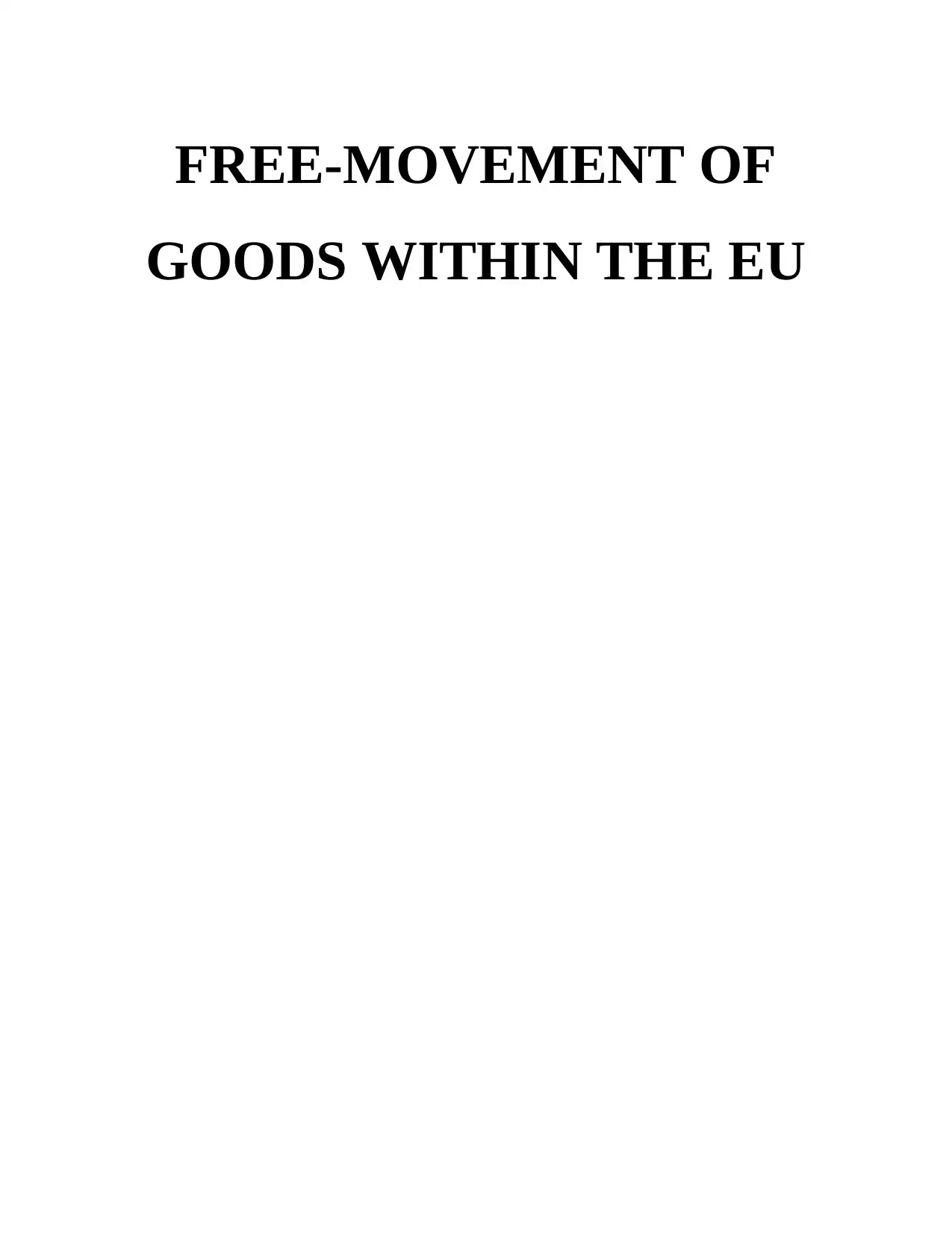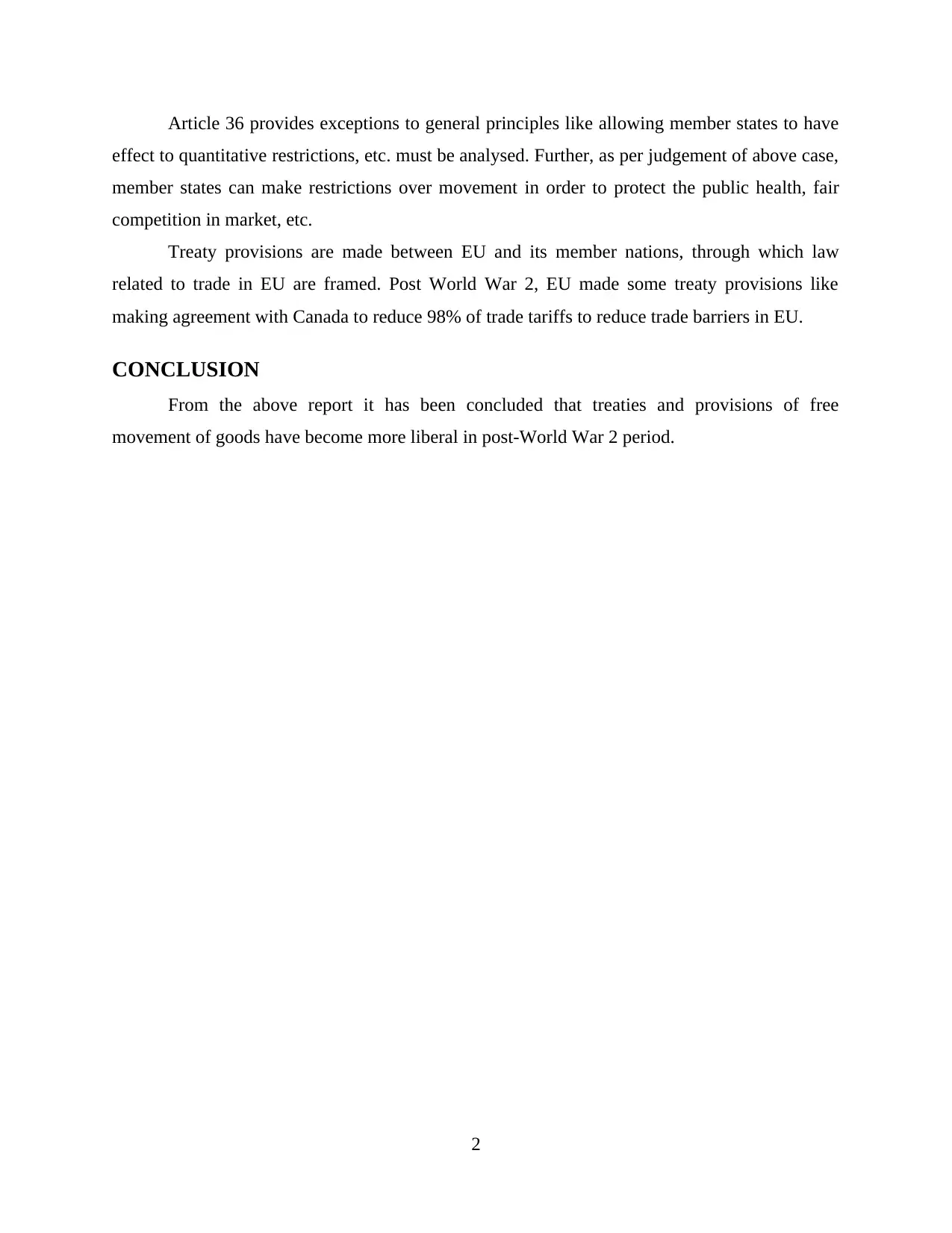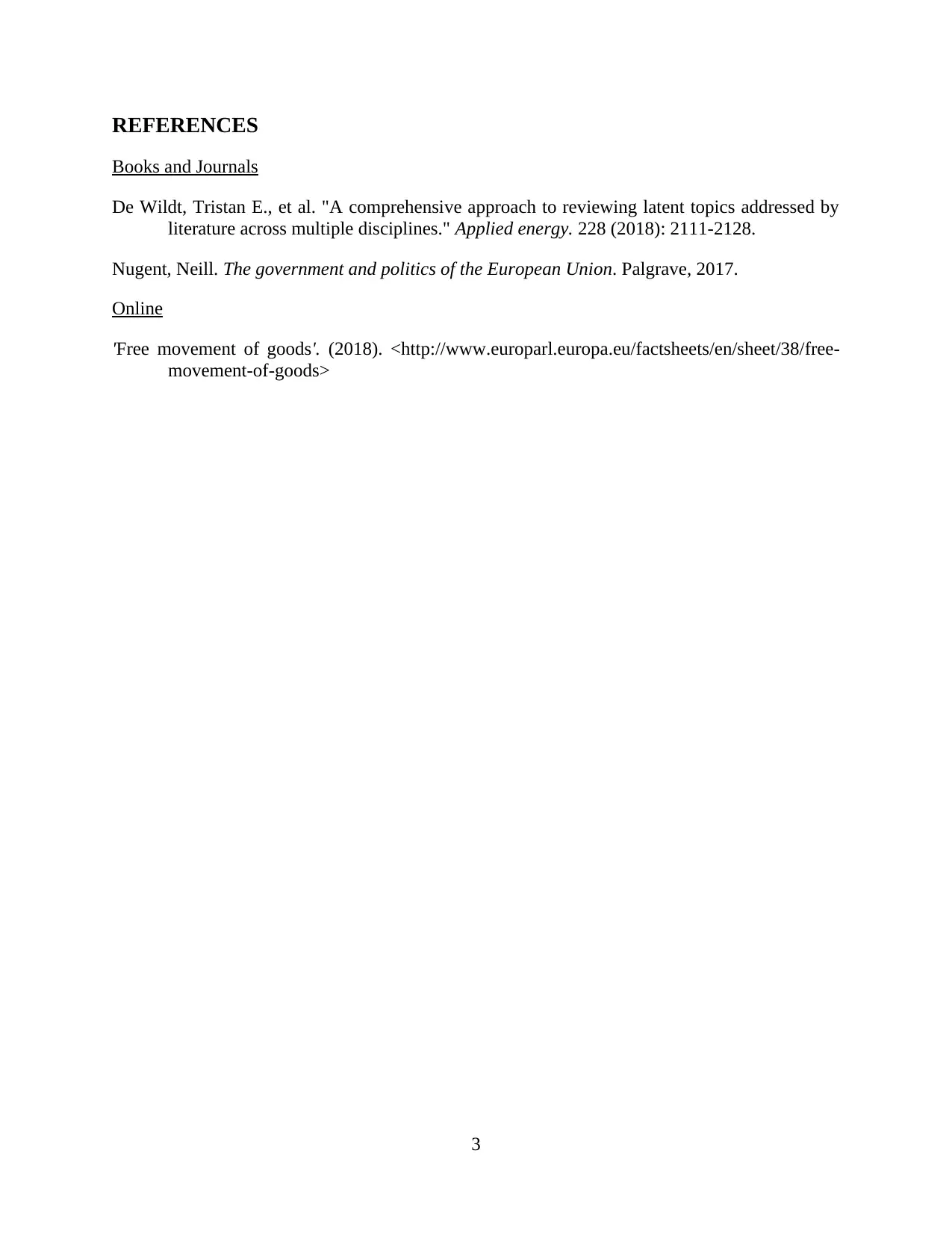Analysis of Free Movement of Goods: Post-WW2 and EU Policies
VerifiedAdded on 2020/12/18
|5
|605
|297
Report
AI Summary
This report provides an overview of the free movement of goods within the European Union, focusing on the post-World War 2 period. It highlights the evolution from the customs union to the internal market and discusses the relevant treaties and legal frameworks. The report examines key principles like mutual recognition and the elimination of trade barriers, while also analyzing the impact of the Cassis de Dijon case and Article 34 and 36 of the EU. Furthermore, the report considers the impact of the EU's trade agreements, such as those with Canada, on reducing trade tariffs. In conclusion, the report emphasizes the liberalization of goods movement within the EU and its implications on the member nations.
1 out of 5












![[object Object]](/_next/static/media/star-bottom.7253800d.svg)